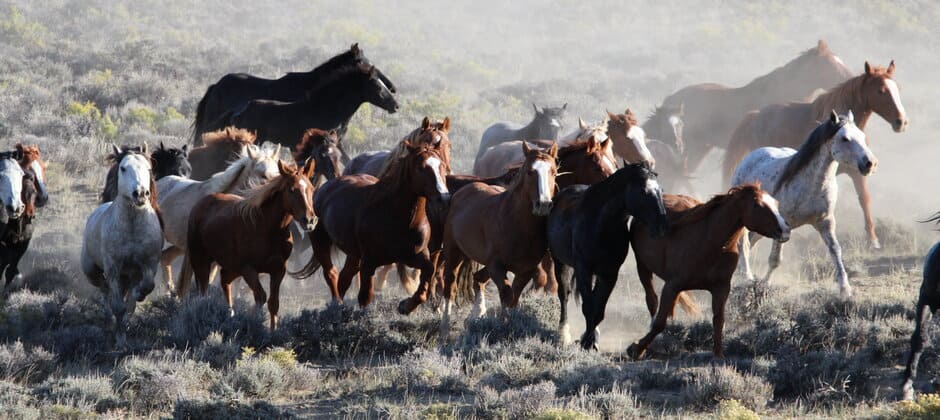Share this article
BLM to remove up to 3,500 horses from Wyoming
The Bureau of Land Management recently released an assessment of its plan to remove up to 3,500 wild horses from public lands in southwestern Wyoming, finding that the removals would benefit rangeland health, sage-grouse, and more.
Wyoming hosts more than 8,700 horses on BLM-managed lands in the state, as of March 2020. More than 95,000 horses and burros roam BLM-managed public lands in 10 western states, far above their nationwide population goal of no more than 26,770 animals. Wyoming’s population goal is no more than 3,795 wild horses to help maintain an ecological balance.
The agency plans to remove horses from five herd management areas (HMAs) in the Red Desert outside Rock Springs, Wyoming. Within those HMAs, which cover about 2.5 million acres of public lands, there are currently 5,100 wild horses, far above the area’s total appropriate management level (AML) of 1,550-2,165. The BLM recently released an environmental assessment looking at the impacts of this removal on the environment, which found that the gathers would lead to long-term improvements in rangeland condition, with benefits for sage-dependent species such as sage-grouse (Centrocercus urophasianus).
Gathers in the Red Desert could begin as early as July and are expected to take place over several years. The plan comes as a result of a legal settlement established in 2013, after the Rock Springs Grazing Association brought suit against the BLM, asking the agency to remove the wild horses that had moved off of public lands onto its property. Under the settlement agreement, the BLM was required to re-examine its management of the HMAs in the area.
The BLM’s management of horses and burros is frequently contested in court. The ecologically feral species are managed and defined as “wild” under the Wild Free-Roaming Horses and Burros Act that was passed in 1971. The BLM uses gathers and fertility control to reduce the number of horses and burros on public lands.
Last year, the BLM submitted a long-awaited report to Congress, detailing its proposal to reduce the wild horse and burro population to a sustainable level over the next 15 to 18 years using various nonlethal methods. It began implementing that plan partly in Oct. 2019 and fully late in 2020, when the BLM received $115.7 million in appropriations for its Wild Horse and Burro Program.
Since the plan was put in place, the BLM has conducted about 60 roundups and removed nearly 15,000 wild horses and burros from public lands. As will be the case with the impending Red Desert gathers, most horses are permanently removed from the range, and are either adopted or sent to long-term holding pastures. Some mares are released back onto the range after being treated with various fertility control measures.
The Wildlife Society has regularly advocated for federal agencies to reduce free-roaming horse and burro populations on public lands. As an invasive species, horses and burros compete with native wildlife and damage their habitats.
The BLM will accept public comments through April 30.
Read TWS’s Issue Statement on Feral Horses and Burros in North America and watch the Horse Rich and Dirt Poordocumentary film.
Header Image: The BLM has announced plans to remove up to 3,500 wild horses from public lands in southwestern Wyoming. Credit: Jay D'Ewart








